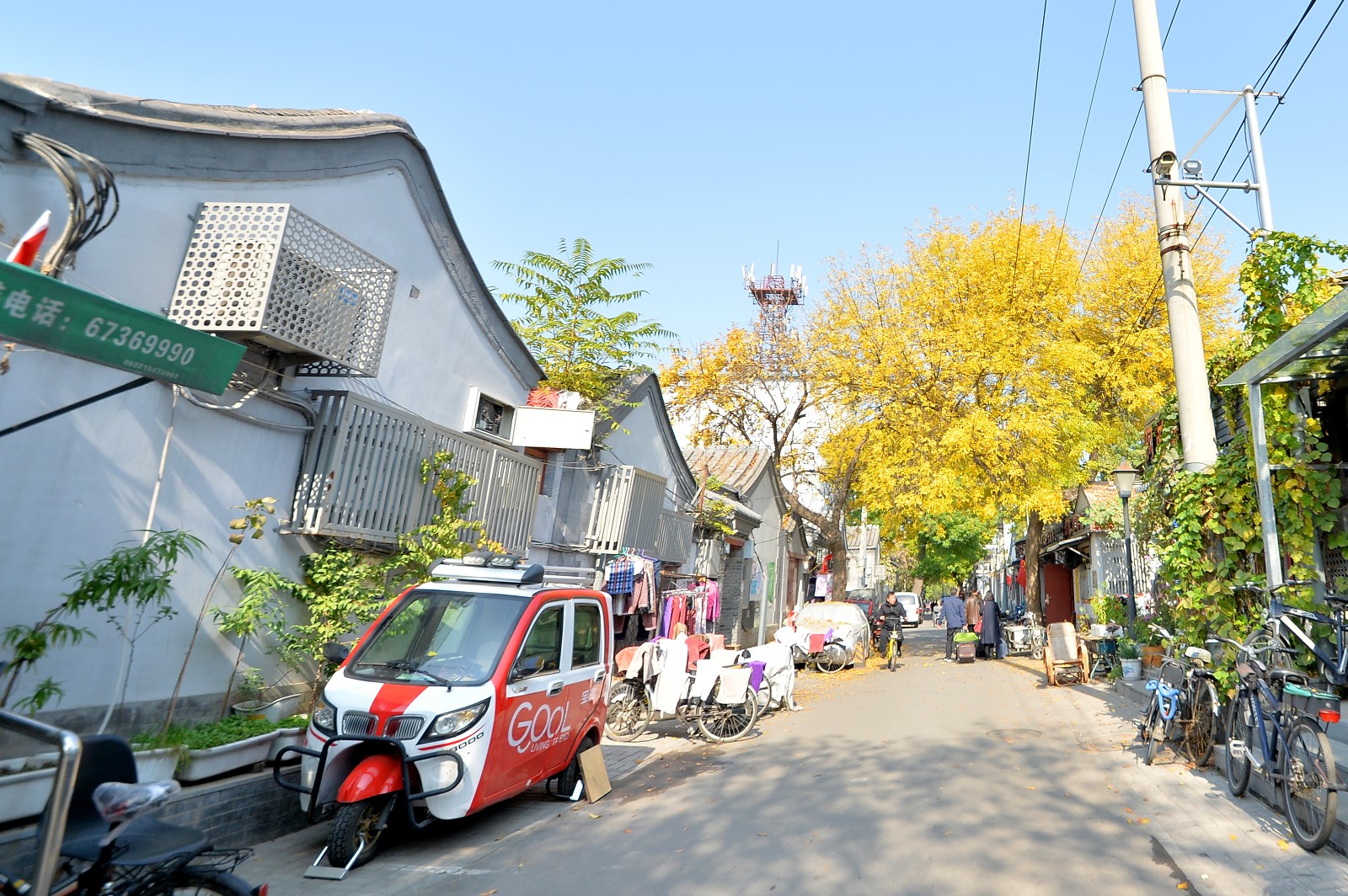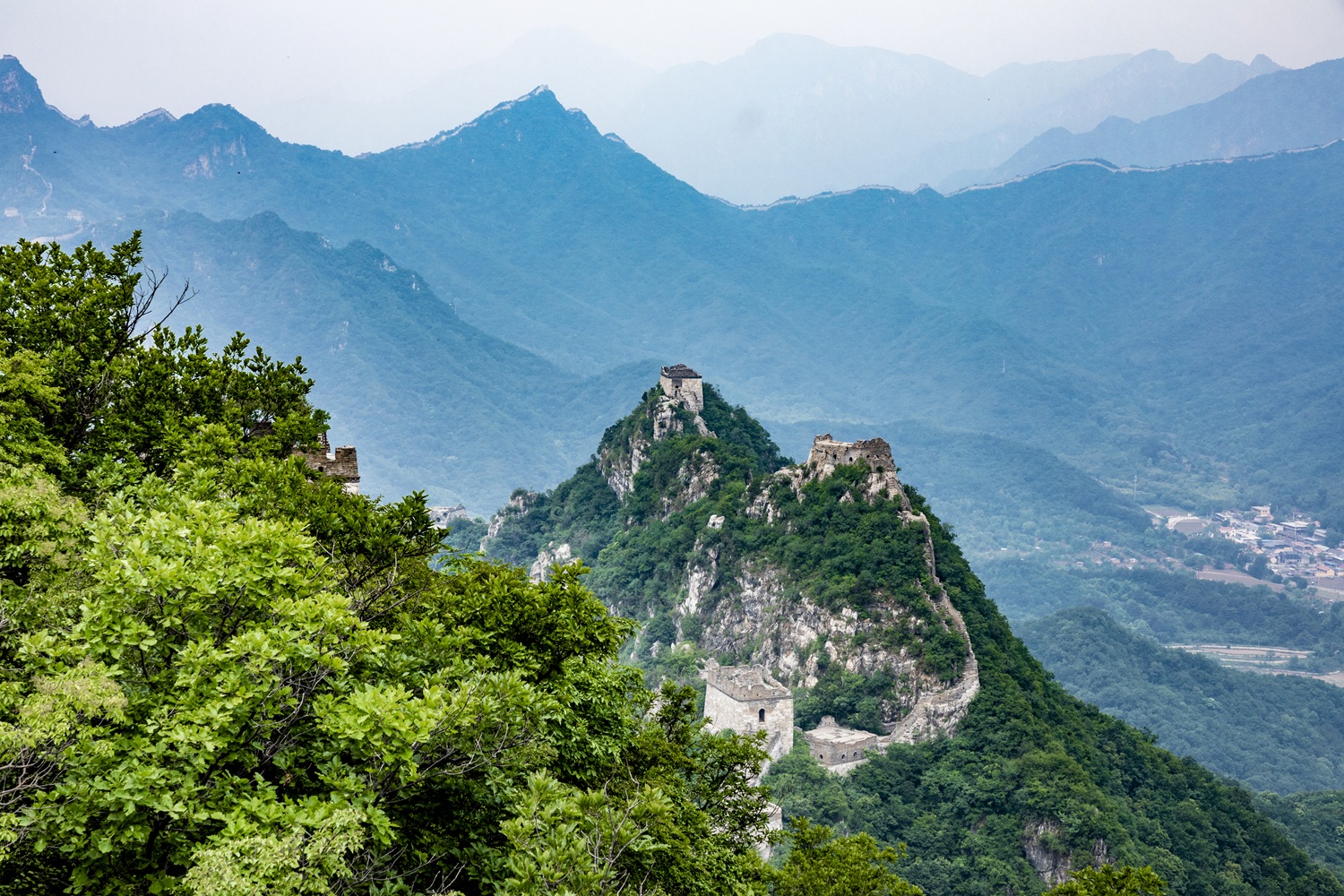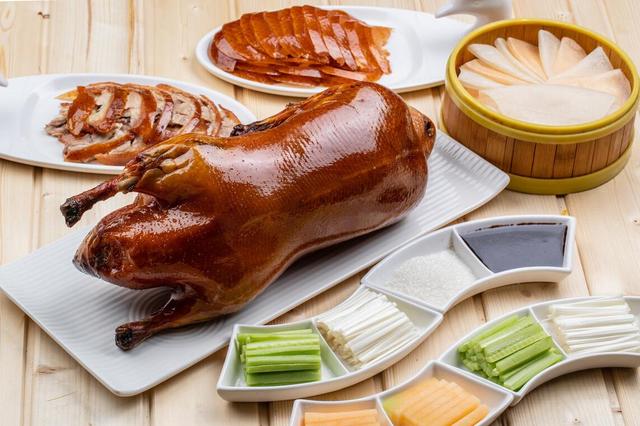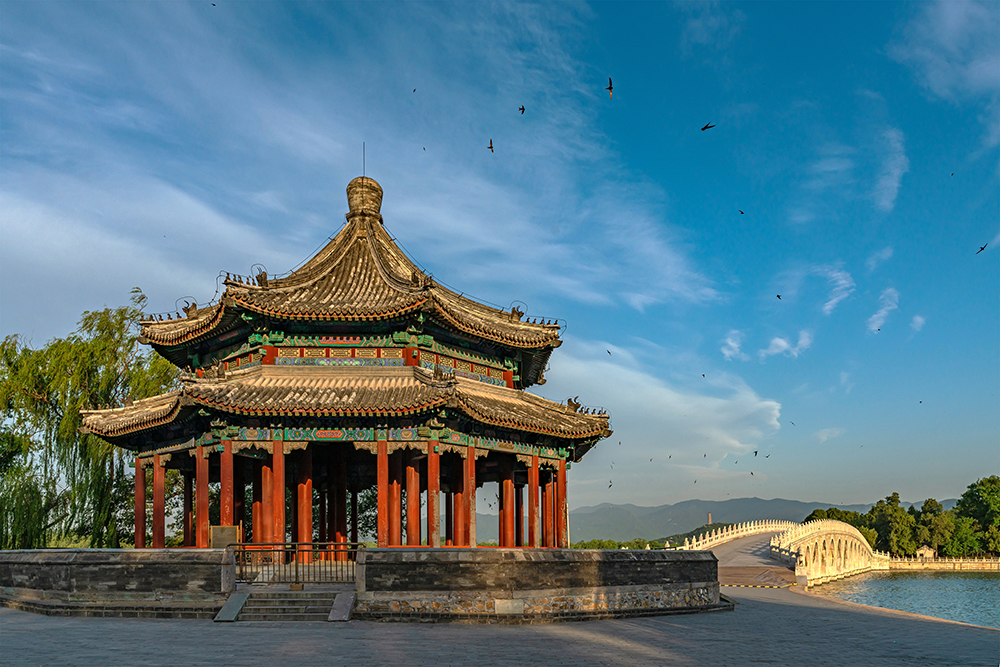Beijing city
Beijing, commonly known as "Jing" and historically known as Yanjing and Beiping, is the capital of the People's Republic of China. It serves as the political and cultural center of the country and is renowned as a world-famous ancient capital and a modern international city. Located in the northern part of the North China Plain, it borders Tianjin to the east and is adjacent to Hebei Province in all other directions.
Nature and land
Terrain: The terrain is high in the northwest and low in the southeast. The west, north, and northeast are surrounded by mountains on three sides, while the southeast is a plain that gently slopes towards the Bohai Sea.
Climate: Beijing has a warm temperate semi-humid and semi-arid monsoon climate.
Area: The total administrative area of Beijing Municipality is 16,410 square kilometers.
Tourism resources: In 2024, the total number of tourists received was 370 million, an increase of 13.1% over the previous year; the total tourism revenue reached 672.24 billion yuan, an increase of 14.9%.
Resources and Environment: In 2024, a total of 676 hectares of new afforestation and greening were added (including reforestation for national land greening projects), with a forest coverage rate of 44.95% and an urban green coverage rate of 49.84%.
Highlights: The three major halls on the central axis (Taihe Hall, Zhonghe Hall, and Baohe Hall)
Visit the Nine Dragon Screen and the Golden Bowl of Eternal Stability in the Treasure House (separate ticket required)
Badaling Great Wall:
Beibao Building Haohan Slope (888 meters above sea level)
the Summer Palace
Essence route: Enter from the East Palace Gate - Renshou Hall - Long Corridor - Paiyun Hall - Buddhist Incense Pavilion - Stone Boat - Take a boat to Nanhu Island - Seventeen Arch Bridge
Enjoyment of Peking Opera:
Huguang Guild Hall (with dinner and performance)
Chang'an Grand Theater (Professional Performance)
Choosing martial arts dramas such as "Three Crossings" and "The Goddess Scatters Flowers" is easier to understand
alleyway
Beijing's hutongs are not merely the veins of the city or the streets for transportation; they are also the places where ordinary Beijing people live and an important stage for the development and evolution of the capital's history and culture. They record the changes of history. At first glance, Beijing's hutongs all seem to be identical with gray walls and tiles. However, this is not the case. As long as you are willing to put in some effort, wander through a few hutongs, and chat with the old residents there for a while, you will find that each hutong has its own story and legendary experiences. The anecdotes and allusions within, along with the style of the times, embody a strong cultural atmosphere, like a museum of folk customs, imprinted with the marks of various social lives.
 Recommended route: Yandai Xie Street (shopping) - Yinding Bridge (photography) - Houhai North Street (bars) - Former Residence of Soong Ching Ling (Sihe Courtyard)
Recommended route: Yandai Xie Street (shopping) - Yinding Bridge (photography) - Houhai North Street (bars) - Former Residence of Soong Ching Ling (Sihe Courtyard)
The widest alley - Lingjing Alley
The shortest alley in Beijing - Yichi Street
The longest alley in Beijing - Dongjiaomin Lane
The most famous place for fireworks - Badaxiang
A renowned cultural street - Yandai Xie Street
The Great Wall: The Great Wall is a symbol of the Chinese nation. With its tens of thousands of miles of span, it has become a magnificent architectural marvel and an unparalleled historical and cultural landscape in human history, serving as an important window showcasing the long-standing and rich history of Chinese civilization to the world.
Xishan-Yongding River: As one of the three cultural belts in Beijing, the Xishan-Yongding River Cultural Belt boasts exquisite natural scenery and a rich concentration of cultural heritage. Its cultural threads run through the ages, making it an important component of Beijing's "one core, one city, three belts, and two districts" cultural center construction framework.
Barbecue: In Beijing, there is a saying, "Nan Wan Bei Ji", referring to the "Barbecue Wan" on Xuannei Street in the south of the city and the "Barbecue Ji" in Houhai. These two restaurants mainly specialize in barbecue. The difference is that Nan Wan specializes in roast beef, while Bei Ji specializes in roast lamb. What! I heard that there are also two ways to eat barbecue: "Wen Chi" and "Wu Chi".
All are called Shun'er: "Donglai Shun goes east and west, yet only two restaurants exist, heading south and north." In Beijing, Donglai Shun's hotpot is a must-try, representing the "Eastern School"; Xilaishun's halal stir-fried meat stands out as a unique style, representing the "Western School"; Nanlaishun Restaurant is famous for its cooking specialties such as stir-frying, grilling, and hotpot, and its snack banquets are exquisite and unparalleled, leading the trend; Yet another Shun combines the roasting, grilling, and hotpot of the Eastern School with the exquisite and luxurious stir-fries of the Western School, as well as famous snacks from various regions, forming a unique style all its own.
Breakfast: The key to a successful year lies in spring, and the key to a successful day lies in the morning. The importance of breakfast goes without saying. In Beijing, what delicacies can make you abandon the warm quilt and refuse to go back to sleep? My answer is: steamed buns with fried pork liver, and braised pork with hotpot.
Snack shop: "Three big coins buy fine flowers, cut cake and ghost leg make a racket, a bowl of sweet rice porridge in the morning, followed by tea soup and noodle tea; preserved fruit cake and fried sweet ears, hanging oven Shaobing (Baked cake in griddle) and Aiwowo, fork-roasted bun just sold, and then hear the hard-wheat Bobo called; Shaomai and Wonton are lined up on the plate, newly added hang-powder and good rice dumplings..." - "Bamboo Branch Poetry of the Capital" in the Qing Dynasty. Old Beijing's snacks are truly memorable, and one can even listen to stories while eating. Each snack tells a story.
Fried tripe: Fried tripe is crispy and fresh, neither oily nor greasy, and it is said to cure stomach diseases. If the person eating fried tripe can drink alcohol, they will always drink a couple of jars. After drinking, eating two freshly baked Shaobing (Baked cake in griddle) is indeed a great pleasure. Therefore, old Beijingers all like to eat fried tripe, especially after the beginning of autumn in the lunar calendar. Beijingers pay attention to "eating autumn", and there is a saying that "if you want to eat autumn, you must have fried tripe".
Have a drink: There is a refreshing sourness called "fermented sour milk made from ground mung bean". There is a saying that to see if someone is an old Beijing, just give him a bowl of fermented sour milk made from ground mung bean. If he can enjoy the strange sour taste and drink it down along the edge of the bowl, it is a proof of his identity. Of course, if you can't accept fermented sour milk, then a bowl of sweet tea soup must be a good choice.
Beijing Flavor: Many time-honored restaurants in Beijing have their origins linked to historical legends. It is said that the name "Liuquanju" was originally a work of despair by the traitorous prime minister Yan Song of the Ming Dynasty; it is said that the naming of the Duyi Shaomai restaurant is related to Emperor Qianlong of the Qing Dynasty; it is also said that Shaguo Ju opened during the reign of Emperor Qianlong of the Qing Dynasty. The primary factor behind the initial rise of these time-honored restaurants lies in their exquisite craftsmanship and unique taste. Beijing's time-honored restaurants are not just food establishments, but also bear witness to historical changes, embodying the intangible assets of traditional culture.
Halal Restaurant: Halal cuisine is not limited to roast meat, shabu-shabu, and snack shops. When it comes to halal restaurants in Beijing, one cannot overlook Hongbinlou. Its status in the halal catering industry in Beijing is akin to Quanjude's position in the roast duck circle. Yitiao Long Restaurant, Bai Kui Lao Hao, Xiaolou Restaurant, and others are also time-honored brands with a history of over a century.
Nature and land
Terrain: The terrain is high in the northwest and low in the southeast. The west, north, and northeast are surrounded by mountains on three sides, while the southeast is a plain that gently slopes towards the Bohai Sea.
Climate: Beijing has a warm temperate semi-humid and semi-arid monsoon climate.
Area: The total administrative area of Beijing Municipality is 16,410 square kilometers.
Tourism resources: In 2024, the total number of tourists received was 370 million, an increase of 13.1% over the previous year; the total tourism revenue reached 672.24 billion yuan, an increase of 14.9%.
Resources and Environment: In 2024, a total of 676 hectares of new afforestation and greening were added (including reforestation for national land greening projects), with a forest coverage rate of 44.95% and an urban green coverage rate of 49.84%.
Must-visit classic attractions

Highlights: The three major halls on the central axis (Taihe Hall, Zhonghe Hall, and Baohe Hall)
Visit the Nine Dragon Screen and the Golden Bowl of Eternal Stability in the Treasure House (separate ticket required)
Badaling Great Wall:
Beibao Building Haohan Slope (888 meters above sea level)
the Summer Palace
Essence route: Enter from the East Palace Gate - Renshou Hall - Long Corridor - Paiyun Hall - Buddhist Incense Pavilion - Stone Boat - Take a boat to Nanhu Island - Seventeen Arch Bridge
Enjoyment of Peking Opera:
Huguang Guild Hall (with dinner and performance)
Chang'an Grand Theater (Professional Performance)
Choosing martial arts dramas such as "Three Crossings" and "The Goddess Scatters Flowers" is easier to understand
alleyway
Beijing's hutongs are not merely the veins of the city or the streets for transportation; they are also the places where ordinary Beijing people live and an important stage for the development and evolution of the capital's history and culture. They record the changes of history. At first glance, Beijing's hutongs all seem to be identical with gray walls and tiles. However, this is not the case. As long as you are willing to put in some effort, wander through a few hutongs, and chat with the old residents there for a while, you will find that each hutong has its own story and legendary experiences. The anecdotes and allusions within, along with the style of the times, embody a strong cultural atmosphere, like a museum of folk customs, imprinted with the marks of various social lives.

The widest alley - Lingjing Alley
The shortest alley in Beijing - Yichi Street
The longest alley in Beijing - Dongjiaomin Lane
The most famous place for fireworks - Badaxiang
A renowned cultural street - Yandai Xie Street
Three major cultural belts

The Great Wall: The Great Wall is a symbol of the Chinese nation. With its tens of thousands of miles of span, it has become a magnificent architectural marvel and an unparalleled historical and cultural landscape in human history, serving as an important window showcasing the long-standing and rich history of Chinese civilization to the world.
Xishan-Yongding River: As one of the three cultural belts in Beijing, the Xishan-Yongding River Cultural Belt boasts exquisite natural scenery and a rich concentration of cultural heritage. Its cultural threads run through the ages, making it an important component of Beijing's "one core, one city, three belts, and two districts" cultural center construction framework.
Time-honored brands in Beijing

Barbecue: In Beijing, there is a saying, "Nan Wan Bei Ji", referring to the "Barbecue Wan" on Xuannei Street in the south of the city and the "Barbecue Ji" in Houhai. These two restaurants mainly specialize in barbecue. The difference is that Nan Wan specializes in roast beef, while Bei Ji specializes in roast lamb. What! I heard that there are also two ways to eat barbecue: "Wen Chi" and "Wu Chi".
All are called Shun'er: "Donglai Shun goes east and west, yet only two restaurants exist, heading south and north." In Beijing, Donglai Shun's hotpot is a must-try, representing the "Eastern School"; Xilaishun's halal stir-fried meat stands out as a unique style, representing the "Western School"; Nanlaishun Restaurant is famous for its cooking specialties such as stir-frying, grilling, and hotpot, and its snack banquets are exquisite and unparalleled, leading the trend; Yet another Shun combines the roasting, grilling, and hotpot of the Eastern School with the exquisite and luxurious stir-fries of the Western School, as well as famous snacks from various regions, forming a unique style all its own.
Breakfast: The key to a successful year lies in spring, and the key to a successful day lies in the morning. The importance of breakfast goes without saying. In Beijing, what delicacies can make you abandon the warm quilt and refuse to go back to sleep? My answer is: steamed buns with fried pork liver, and braised pork with hotpot.
Snack shop: "Three big coins buy fine flowers, cut cake and ghost leg make a racket, a bowl of sweet rice porridge in the morning, followed by tea soup and noodle tea; preserved fruit cake and fried sweet ears, hanging oven Shaobing (Baked cake in griddle) and Aiwowo, fork-roasted bun just sold, and then hear the hard-wheat Bobo called; Shaomai and Wonton are lined up on the plate, newly added hang-powder and good rice dumplings..." - "Bamboo Branch Poetry of the Capital" in the Qing Dynasty. Old Beijing's snacks are truly memorable, and one can even listen to stories while eating. Each snack tells a story.
Fried tripe: Fried tripe is crispy and fresh, neither oily nor greasy, and it is said to cure stomach diseases. If the person eating fried tripe can drink alcohol, they will always drink a couple of jars. After drinking, eating two freshly baked Shaobing (Baked cake in griddle) is indeed a great pleasure. Therefore, old Beijingers all like to eat fried tripe, especially after the beginning of autumn in the lunar calendar. Beijingers pay attention to "eating autumn", and there is a saying that "if you want to eat autumn, you must have fried tripe".
Have a drink: There is a refreshing sourness called "fermented sour milk made from ground mung bean". There is a saying that to see if someone is an old Beijing, just give him a bowl of fermented sour milk made from ground mung bean. If he can enjoy the strange sour taste and drink it down along the edge of the bowl, it is a proof of his identity. Of course, if you can't accept fermented sour milk, then a bowl of sweet tea soup must be a good choice.
Beijing Flavor: Many time-honored restaurants in Beijing have their origins linked to historical legends. It is said that the name "Liuquanju" was originally a work of despair by the traitorous prime minister Yan Song of the Ming Dynasty; it is said that the naming of the Duyi Shaomai restaurant is related to Emperor Qianlong of the Qing Dynasty; it is also said that Shaguo Ju opened during the reign of Emperor Qianlong of the Qing Dynasty. The primary factor behind the initial rise of these time-honored restaurants lies in their exquisite craftsmanship and unique taste. Beijing's time-honored restaurants are not just food establishments, but also bear witness to historical changes, embodying the intangible assets of traditional culture.
Halal Restaurant: Halal cuisine is not limited to roast meat, shabu-shabu, and snack shops. When it comes to halal restaurants in Beijing, one cannot overlook Hongbinlou. Its status in the halal catering industry in Beijing is akin to Quanjude's position in the roast duck circle. Yitiao Long Restaurant, Bai Kui Lao Hao, Xiaolou Restaurant, and others are also time-honored brands with a history of over a century.
royal garden

simliy
